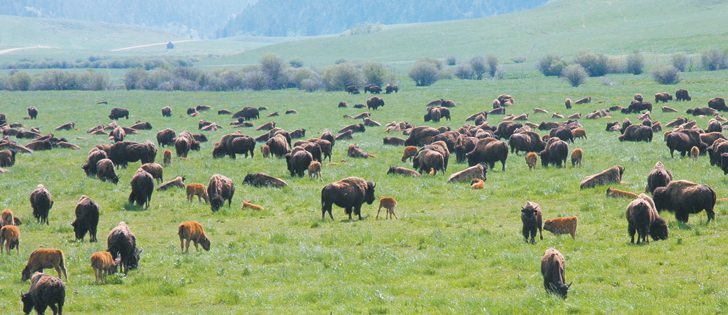Adam Hering travelled to the Alberta-Northwest Territories border to help an at-risk herd of wild bison known to carry bovine tuberculosis.
Hering, a graduate student at the University of Saskatchewan, had hoped to develop a more effective diagnostic test for the disease but last week was dismantling his research project after local community groups withdrew their support.
“It would be sad to see this project die because people have been not talking about this disease, even though it’s been a problem for many, many years,” he said on the phone from Forth Smith, N.W.T.
Read Also

Pakistan reopens its doors to Canadian canola
Pakistan reopens its doors to Canadian canola after a three-year hiatus.
Wood bison at Wood Bison National Park in northeastern Alberta have carried the disease since the 1920s, when Plains bison that had caught tuberculosis and brucellosis from domestic cattle were brought to the park. The Alberta government has made efforts to monitor the disease and keep infected, free-ranging herds away from domestic cattle.
Bovine tuberculosis, reportable under the Health of Animals Act, impairs an infected animal’s breathing and makes it more vulnerable to predators.
A skin test can test for bovine tuberculosis in commercial cattle, but it isn’t always accurate. It also requires handling an animal twice, which is problematic in wild herds.
The most accurate way to diagnose an animal is to conduct a full post-mortem exam.
Hering was seeking an effective blood test that managers could use to determine which animals are infected. He said similar work has helped control the disease in elk.
“The way we removed (bovine tuberculosis) from cattle populations was essentially killing off entire herds of cattle as soon as one animal tested positive, which is an option that’s been proposed in Wood buffalo and isn’t acceptable and hasn’t happened and shouldn’t happen, in my opinion,” said Hering, who estimated there are close to 5,000 Wood bison in the park.
He planned to conduct skin and blood tests on animals and ultimately cull 180 to 200 older bulls over three years, working with members of local communities to harvest the animals and distribute the meat.
He said he contacted local leaders late last fall, who agreed to the project, and received a research permit.
“There were community members that are generally concerned about the size of the herd and based on population estimates, it seems like the herd is on a downward trend,” said Hering.
“What exactly is leading to that, it’s hard to say for sure. These diseases could be part of that picture and very likely are a part of that picture.”
His team began field work in February, working with a helicopter to put collars on animals.
Ken Hudson, president of the Fort Smith Metis Council, said details of the community involvement, including who would be involved, when and for how much, weren’t agreed upon. He said he contacted two other nearby aboriginal groups and all three withdrew support.
“We all initially supported it. It fell apart because of the lack of communication and lack of carrying through with the promises that they made,” he said.
Hering said local community members were never meant to be involved in the project’s first phase.
“It’s really just such an unfortunate miscommunication that happened. It seemed like a lot of the things that people are pointing out is related to consultation, and it’s too bad,” said Hering. “I think everybody came to the table with really good intentions.”
The project’s second phase, culling the animals, was to begin this month, but instead Hering arrived in Fort Smith April 6 to remove the collars from the animals.
“Without the support of all three groups, we didn’t feel comfortable proceeding with the project,” he said.
“They had requested we remove the collars. We decided we should honour that request, and that’s what we’re doing right now.”
Both sides expressed hope that the project, which was to be the focus of Hering’s PhD thesis, could be revived in the future.
“I hope for the sake of bison conservation in Canada and all of the benefits that I think really can come to local communities as a result … that it can go through in future years,” said Hering. “Even if it’s not the main topic of my thesis, I definitely hope and intend to be involved if possible.”
Contact dan.yates@producer.com















